Simple Vegan Pasta Dough Raviolis
By á-3354
Bake your own homemade bread and let your homemade pasta simmer on the stove for an authentic, delicious Italian dinner.
Ingredients
- 2 cups flour
- 2 teaspoons extra virgin olive oil
- 1/2 cup water
- 2 pinches salt
Details
Servings 2
Preparation time 30mins
Cooking time 35mins
Preparation
Step 1
In a large bowl, add flour and salt, mixing the two ingredients together so as to distribute your salt throughout your flour. I then add the olive oil and then about half of the water. I prefer to mix my dough by hand as to better control the mix rate and moisture levels.
Working from the outside of the bowl towards the center (not unlike folding a cake batter) I work the dry into the wet, adding small amounts of my remaining water as I go. You will end up with a lovely dough ball after 3 to 7 minutes of mixing and kneading your ingredients.
If your dough is too wet, add small amounts of flour and continue to knead, if it is too dry, add small amounts of water and continue to knead. You will discover that finding the balance is quite simple, so breathe, be happy and laugh at the joy of your creation. As an aside, you can wear latex gloves for the mixing part to keep your hands clean, just be sure to buy gloves that do not have a coating or powder on the them.
Once you have your dough made, move to a flat surface for rolling out your pasta. I have a wooden island in the center of my kitchen with a wooden butcher block for a top. I clear this, clean it thoroughly and then dust the top with flour. I separate my dough into 2 separate balls, roughly the same size. Using a french rolling pin (any type of roller will do of course), I place one of the dough balls into the center of my working area and begin rolling out my pasta, being sure to flour the dough and rolling pin as needed to avoid sticking.
Flipping the dough a few times and rolling in all 4 directions, I create a rough circle, attempting to roll out a fairly thin sheet. Not so thin that you can see through the pasta and noting that your thickness of pasta is by and large a personal preference as a chef. I recommend starting thinner than thicker and seeing what you and your dinner guests like the most.
With Ravioli, you have a top and a bottom with your filling inside. Once your dough is rolled out, gently fold it in half so as to create a crease. Then flatten it back out on your working surface. Using a sharp knife, follow the crease line and cut your pasta into 2 separate pieces. Now you have a top and a bottom for your ravioli! Using a pastry brush, gently sweep any excess flour off of your top and bottom sections. You will also need a small bowl of water with an applicator brush (I use a silicone basting brush), your ravioli stamp, a large plate with wax paper and your filling.
A note on ravioli cutters. There are a lot to choose from and not everyone uses a cutter at all. You can use a knife and freehand cut your raviolis. I prefer a hand cutter as they are not only inexpensive, but create perfect raviolis that are all the same size with crimped and finished ends. This allows for easier serving and plate presentation, especially if you are carefully monitoring your food intake levels with each meal. I use the single ravioli cutter made by Chef Mario Batali, mainly because I like the size and the color is orange which makes me smile. You can use whatever cutter makes you happy! Some of you may be wondering why I am not using a hand crank pasta machine with the ravioli attachment as that does appear to be a quick method. I prefer the hand made attention that goes into each ravioli as you prepare the dish and by the time you set up your hand crank and get everything sorted, you have spent about the same amount of time.
Now that you have your pasta dough rolled out and cut into 2 roughly equal halves and all excess flour has been brushed off, take your stamp and gently imprint the shape into one side of your dough. This allows you to see how many raviolis will fit on the pasta you have rolled out while also marking where you will place your filling for each one. imprinting is not cutting, so don’t press all the way down as to cut the raviolis out of the pasta.
Using a small spoon, place a liberal amount of your filling into the center of each of your ravioli imprints. I have found that more is better when using a hand stamp, just be sure not to overflow onto the edges of your imprint as you want a clear space around each filling.
Once you have placed all of your fillings onto the scored bottom piece of pasta dough, its time to move your attention to the top piece. Using your applicator brush and small bowl of water, brush the top of the other pasta dough half so as to cover its surface area. You are not looking to soak the dough, just get the gluttons going which creates a sticky surface. Then, taking your time, carefully flip the dough over so that the wet surface is facing down above your fillings. Align your bottom and gently place this top layer onto the bottom later. Do not press down on any edge just yet. First make sure that you are covering all sides, adjusting your dough as necessary. Then, beginning on one side, use your fingers to press the dough edge together and begin moving between all of your little filling mounds, pushing the dough together while moving any air bubbles out towards the other side.
Once you have completed this step, take your ravioli cutter and begin stamping out each ravioli by aligning the stamp with the center of your filling and pressing straight down, cutting all the way through to your work surface. Then you can twist your cutter left and right, gently, so as to free each ravioli. Be sure to place a single sheet of wax paper on a plate and then place each ravioli onto the sheet. Do not let them touch or they will stick together. You may stack them with a sheet of wax paper between each layer, but I would not stack higher than 2 levels as these little guys weigh more than you think!
Once you have cut all of your raviolis you can then move onto the other dough ball that you separated out earlier, repeating all of these steps. This dough recipe with a 2”ravioli stamp should yield between 20 and 30 individual raviolis depending on how thin/thick your pasta dough is and how close together you place your stamps. You may refrigerate your finished ravioli until you are ready to boil them, which I recommend you do within 15 minutes of plating. You can also freeze them for later use, which should be done at this point, not once they are cooked. I also recommend sealing them in a single layer using a vacuum press machine, for maximum freshness.
To cook the ravioli, simply take a large pot, add water, a pinch of good salt and a few drops of extra virgin olive oil. When the water comes to a boil, add your raviolis one at a time. Stir the pot gently. When the raviolis float to the surface of your water, they are done and can be plated. Fresh pasta cooks much faster than dry pasta, so your raviolis will be done within 3 to 5 minutes once they enter the boiling water bath.
To plate, I recommend 6 to 12 ravioli, depending on your plate size and if this is a main course or an appetizer. The type and richness of your filling will also dictate how many you choose to serve. Add your sauce or oil topping and garnish.
You'll also love
-
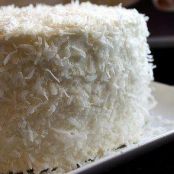 Mom's Southern Coconut Cake
4.3/5
(125 Votes)
Mom's Southern Coconut Cake
4.3/5
(125 Votes)
-
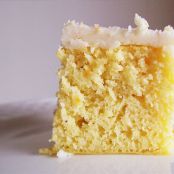 Gluten Free Coconut Flour Orange...
4.1/5
(156 Votes)
Gluten Free Coconut Flour Orange...
4.1/5
(156 Votes)
-
 Pressure Cooker Cheeseburger...
4.4/5
(113 Votes)
Pressure Cooker Cheeseburger...
4.4/5
(113 Votes)
-
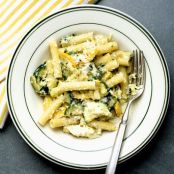 Summer Pasta With Zucchini,...
4/5
(265 Votes)
Summer Pasta With Zucchini,...
4/5
(265 Votes)
-
 Amish Macaroni Salad
4.1/5
(114 Votes)
Amish Macaroni Salad
4.1/5
(114 Votes)
-
 German Maultaschen (Swabian...
4.5/5
(2 Votes)
German Maultaschen (Swabian...
4.5/5
(2 Votes)
-
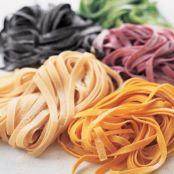 Flavored Pasta Dough-Homemade
4.1/5
(60 Votes)
Flavored Pasta Dough-Homemade
4.1/5
(60 Votes)
-
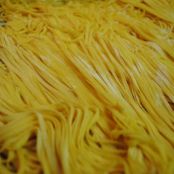 Homemade Pasta Dough - Kitchen Aid...
4.2/5
(46 Votes)
Homemade Pasta Dough - Kitchen Aid...
4.2/5
(46 Votes)
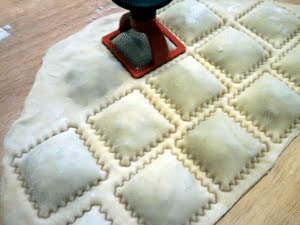
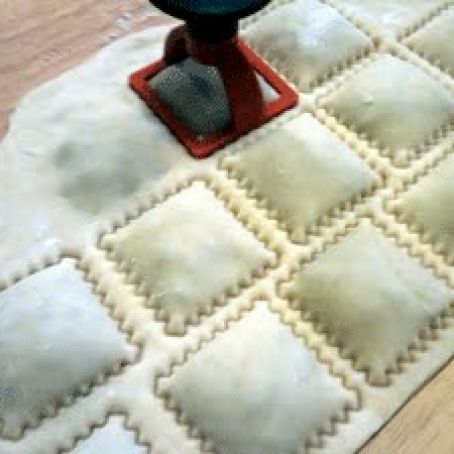


Review this recipe